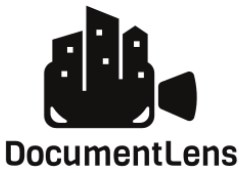The digital age has revolutionized document workflows, including the capture and storage of official paperwork. While photographs offer a convenient and compact format for government documents, the allure of image editing presents a potential minefield. Subtle adjustments can enhance clarity, but inappropriate alterations can raise questions about authenticity and undermine the very documents meant to uphold trust and transparency. This paper navigates the delicate balance between responsible enhancement and manipulation, guiding you through the Do’s and Don’ts of photo editing for government documents. We delve into ethical considerations, legal boundaries, and practical techniques to ensure your edits maintain accuracy and integrity, safeguarding the value of these vital records.
The Importance of Photo Editing in Government Documents
Government documents, spanning from official reports to public communications, serve as crucial instruments for information dissemination, record-keeping, and public engagement. In recent years, the integration of visual elements, particularly photographs, has become an integral aspect of these documents. The importance of photo editing in this context is multifaceted and can be understood through various lenses.
Firstly, photo editing enhances the visual appeal of government documents, ensuring that the information presented is not only comprehensive but also visually engaging. Well-edited images can effectively convey complex information, making it more accessible to a diverse audience. This is particularly relevant in an era where attention spans are shortened, and visual communication is often more impactful than text alone.
Moreover, photo editing serves as a tool for optimizing clarity and precision in conveying information. Basic adjustments such as cropping, resizing, and color correction can significantly improve the overall quality of images, making them more suitable for inclusion in official documents. This aspect is crucial in instances where visual elements must complement textual content to provide a comprehensive understanding of the subject matter.
In addition to improving visual communication, photo editing plays a pivotal role in ensuring the privacy and security of individuals featured in government documents. Sensitivity to privacy concerns is paramount, and careful editing can obscure or protect personal details without compromising the integrity of the information being conveyed.
Furthermore, the professional presentation of government documents is enhanced through judicious photo editing. Aesthetic considerations such as consistent color schemes, image resolution, and stylistic coherence contribute to the overall professionalism of the document, reflecting positively on the issuing institution.
Techniques of Photo Editing
The techniques employed in photo editing for government documents encompass a spectrum of adjustments and manipulations designed to enhance the visual quality, clarity, and communicative effectiveness of images. These techniques range from fundamental adjustments aimed at refining basic attributes to more intricate manipulations for achieving specific visual outcomes.
- Basic Adjustments: At the foundational level, photo editing involves basic adjustments that are fundamental to refining the quality of images. These include cropping, resizing, and color correction. Cropping allows for the removal of unnecessary elements, focusing the viewer’s attention on the essential components of the image. Resizing ensures that images are appropriately scaled for inclusion in the document without compromising quality. Color correction is essential for maintaining consistency in tone and hue, ensuring that images harmonize with the overall visual aesthetic of the document.
- Retouching and Enhancement: Photo editing often involves retouching and enhancement techniques to refine the visual presentation of subjects within the images. Retouching may include removing imperfections, blemishes, or distracting elements that could detract from the intended message. Enhancement techniques, such as adjusting contrast, brightness, and sharpness, are employed to accentuate key features and details, contributing to the overall visual appeal.
- Compositing and Manipulation: In more advanced scenarios, photo editing may involve compositing and manipulation to create composite images or convey specific messages. Compositing entails combining elements from multiple images to form a cohesive visual narrative. Manipulation, while requiring caution, can be employed to modify elements within an image, such as adjusting backgrounds or emphasizing certain details. Care must be taken to ensure that such manipulations do not compromise the accuracy or integrity of the information being conveyed.
- Metadata Editing: Beyond visual adjustments, photo editing in government documents may also involve editing metadata. Metadata contains information about the creation, authorship, and other details related to an image. Editing metadata can be a critical step in ensuring the security and integrity of information, especially when it comes to protecting sensitive data or complying with privacy regulations.
- Consistency and Branding: Consistency in visual elements is crucial for maintaining a professional and cohesive appearance in government documents. Photo editing techniques are employed to ensure that images adhere to established branding guidelines, including color schemes, visual styles, and formatting. Consistent application of these techniques contributes to the overall coherence of the document and reinforces the visual identity of the issuing institution.
The Inappropriateness of Photo Editing
While photo editing is a valuable tool for enhancing visual communication in government documents, its inappropriate use can have far-reaching consequences, eroding trust, and distorting the accuracy of information. Understanding the potential pitfalls associated with improper photo editing is crucial for maintaining transparency and upholding the integrity of government communications.
- Misrepresentation and Deception: One of the primary concerns surrounding the inappropriate use of photo editing in government documents is the potential for misrepresentation and deception. Manipulating images to alter the context, emphasize certain aspects, or downplay others can create a distorted narrative, leading to a misinterpretation of the information presented. This not only undermines the document’s credibility but also erodes public trust in the transparency of government communications.
- Impact on Public Perception: Inappropriately edited images can significantly impact public perception. Whether intentional or accidental, distorted visuals can contribute to a skewed understanding of events, policies, or individuals. Public trust is fragile, and any perception of dishonesty in government communications can lead to skepticism, skepticism, and a diminished confidence in the reliability of official information.
- Legal and Ethical Implications: The inappropriate use of photo editing in government documents may have legal and ethical implications. If editing results in the misrepresentation of facts, it could potentially violate laws related to false information or even breach ethical standards governing the conduct of government institutions. Such instances may expose the government to legal challenges and reputational damage.
- Privacy Concerns: Improper photo editing may also raise privacy concerns, particularly when individuals are featured in government documents. Unwarranted manipulation of images that expose personal details or compromise the privacy of individuals can lead to legal consequences and public outcry. Governments must exercise caution to ensure that photo editing practices align with privacy regulations and ethical standards.
| Type of Inappropriateness | Description | Consequences |
| Manipulation of Context | Altering the surroundings or background of an image to change the narrative or create a false impression. | Loss of credibility, public distrust. |
| Selective Emphasis | Highlighting or obscuring specific elements within an image to influence perception selectively. | Misleading public perception, reputational damage. |
| Fabrication of Details | Adding or removing details within an image to convey information that did not exist in the original context. | Legal repercussions, violation of ethical standards. |
| Misleading Composite | Creating composite images that combine elements from different contexts to mislead the viewer. | Public skepticism, erosion of trust. |
| Unauthorized Privacy Exposure | Failing to adequately protect the privacy of individuals featured in images, potentially exposing sensitive information. | Legal consequences, breach of privacy regulations. |
Legal and Ethical Considerations
The use of photo editing in government documents is not only a matter of visual enhancement but also carries significant legal and ethical implications. Governments must navigate a complex landscape of laws, regulations, and ethical standards to ensure that photo editing practices adhere to the highest standards of transparency, accuracy, and public trust.
Governments are bound by privacy laws and regulations that dictate how personal information, especially in images, should be handled. Photo editing that exposes sensitive details, fails to secure consent, or violates established privacy regulations can result in legal consequences. Adherence to these laws is crucial to protect individuals’ privacy rights and maintain the government’s compliance with legal frameworks.
Images used in government documents may be subject to copyright laws. Unauthorized use or manipulation of copyrighted images without proper attribution or permission can lead to legal disputes and financial penalties. Governments must ensure that they have the right to use and modify images within the scope of applicable copyright laws or secure proper permissions when necessary.
Governments have a duty to present information accurately and truthfully to the public. Photo editing that distorts facts or misrepresents events may violate ethical standards and, in some cases, legal requirements. Misleading the public through manipulated visuals can erode trust and have long-lasting repercussions on the government’s credibility.
Many governments have freedom of information laws that grant citizens the right to access government records, including documents with images. The inappropriate use of photo editing to withhold or manipulate information in a way that obstructs the public’s right to access accurate records can lead to legal challenges and undermine the principles of transparency.
Beyond legal requirements, governments must adhere to ethical standards in their communication practices. This includes maintaining honesty, integrity, and transparency in presenting information to the public. Ethical considerations encompass not only the content of the information but also the means through which it is visually represented, emphasizing the importance of responsible photo editing practices.
Legal and ethical considerations are intertwined with public perception and trust. Violations of legal standards or ethical norms in photo editing practices can result in a loss of public confidence. Governments must recognize that maintaining trust is paramount and that adherence to legal and ethical standards in photo editing contributes to building and preserving that trust.
To ensure compliance with legal and ethical standards, governments should provide comprehensive training to personnel involved in photo editing. Establishing clear guidelines that outline permissible practices, legal obligations, and ethical considerations helps create a framework for responsible image editing. Ongoing education and awareness programs can further reinforce the importance of these standards.




